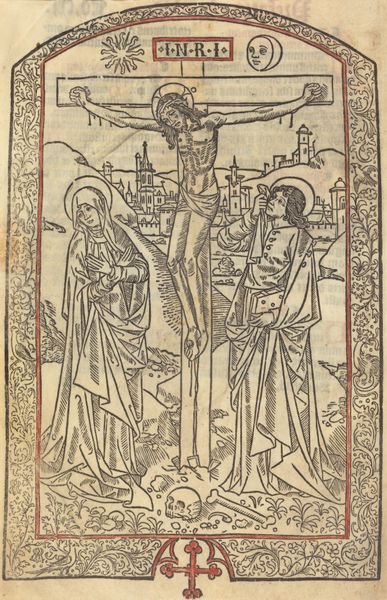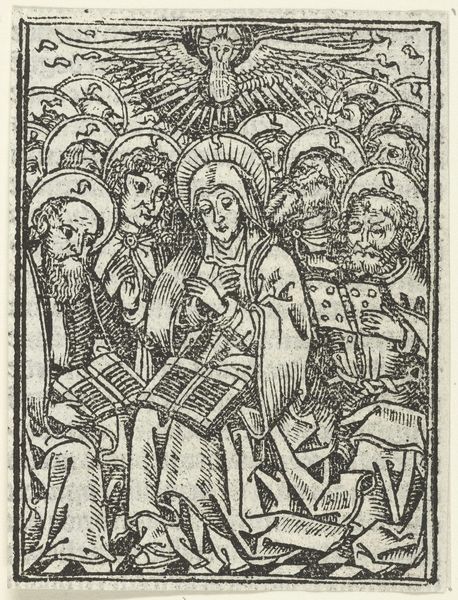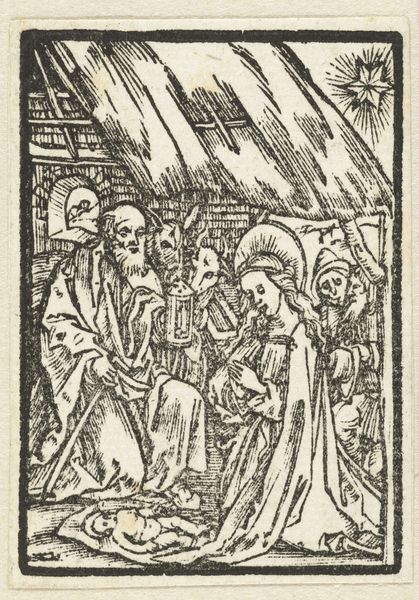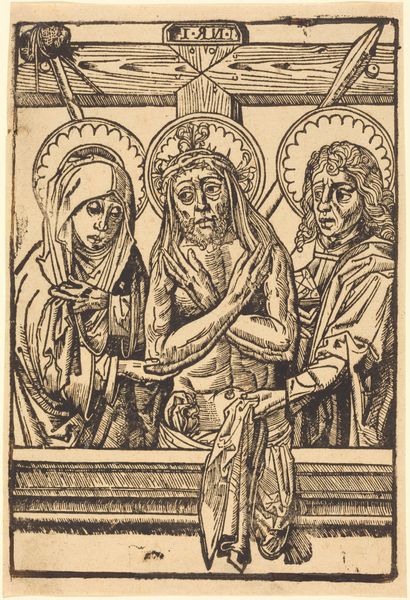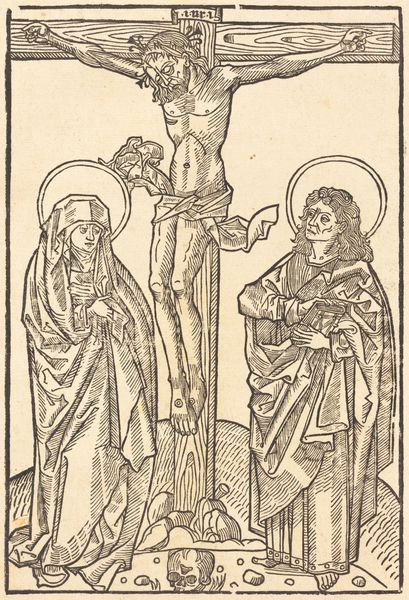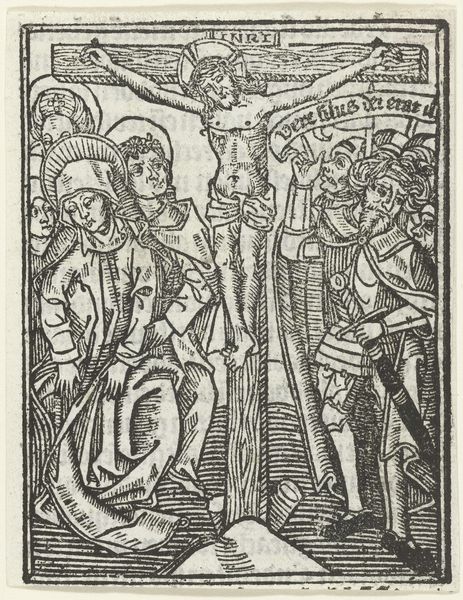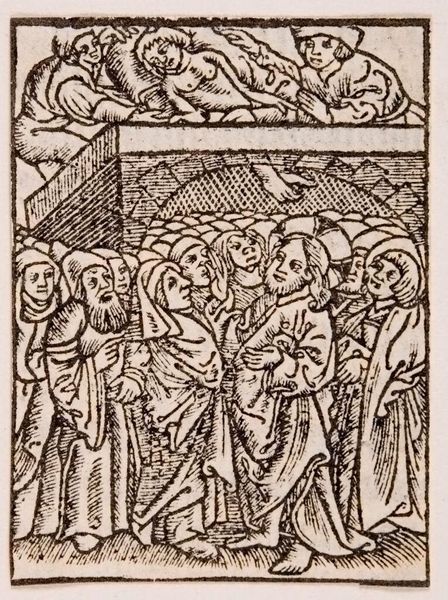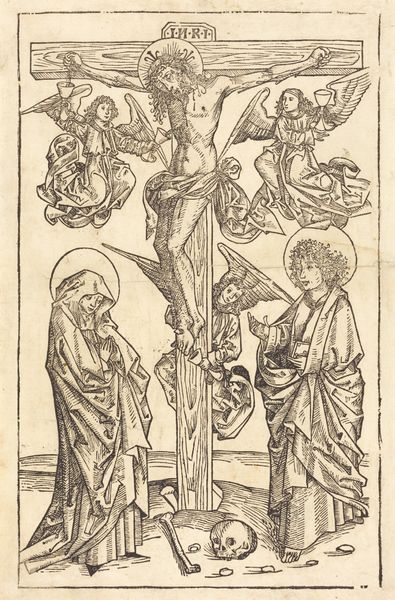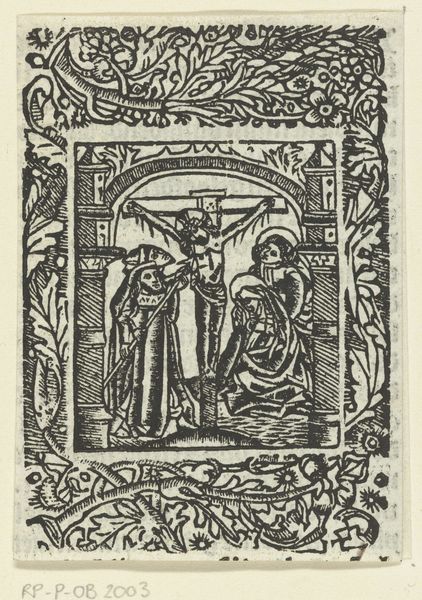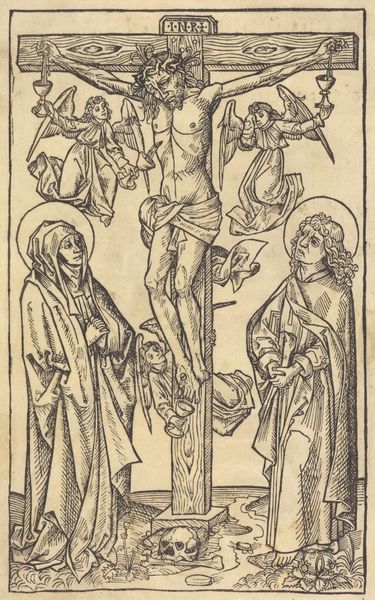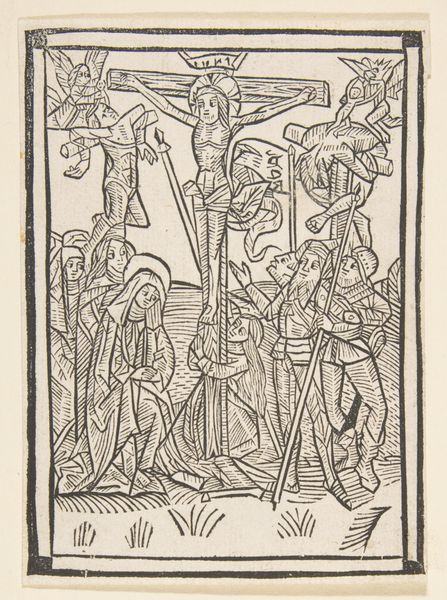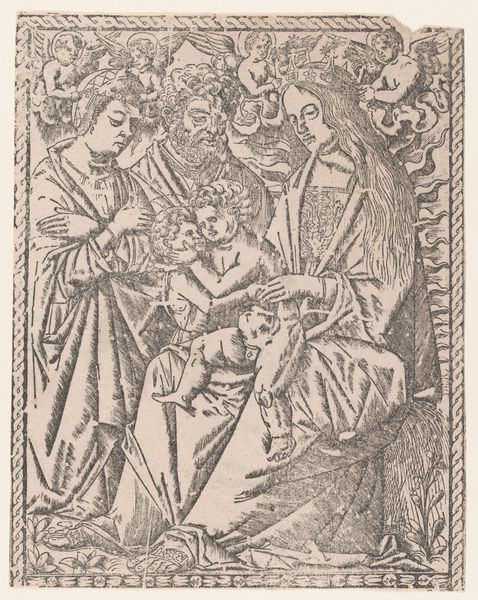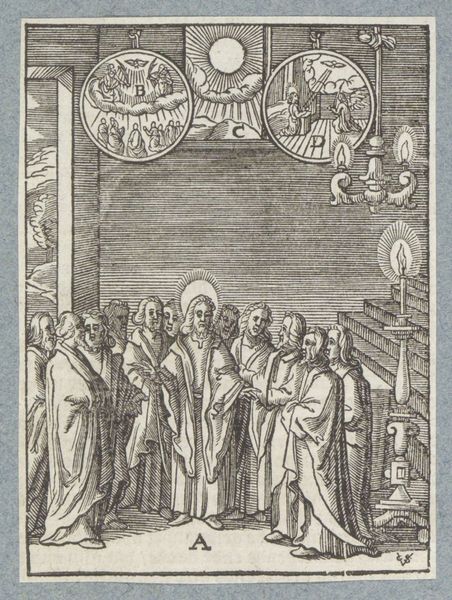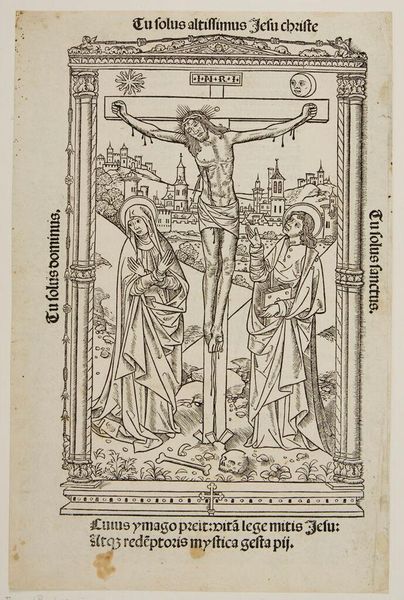
print, woodcut
#
medieval
#
narrative-art
# print
#
pen illustration
#
figuration
#
ink line art
#
woodcut
#
line
#
northern-renaissance
Dimensions: height 90 mm, width 68 mm
Copyright: Rijks Museum: Open Domain
Editor: So, here we have "De vrouwen bij het graf," or "The Women at the Tomb," a woodcut print made between 1490 and 1503 by the Master of the Delbecq-Schreiber Passion. The stark black and white of the print, combined with the slightly awkward figures, gives it a really powerful, almost unsettling feeling. What jumps out at you when you look at this piece? Curator: What I see here is a reflection of the evolving role of art within the context of religious dissemination and emerging print culture. This woodcut, and others like it, were hugely influential as printmaking allowed for images, and therefore ideas, to be circulated more widely than ever before. How do you think a piece like this would impact religious experience? Editor: I imagine it made the stories much more accessible. Like having a comic book version of the Bible. Curator: Precisely! These affordable prints placed biblical narratives in homes, fostering individual contemplation alongside church teachings. It also brings up the socio-political element. Who was in control of these images, and how did this shift of accessibility of religious content play in the dynamic of the time? Editor: So, who commissioned these works, and what role did they play? Curator: Many of these were probably made and sold on spec, catering to individual piety or commissioned by religious orders. This shifts the control of the narrative and imagery of the Church to a decentralized locus. Considering this new public accessibility, it presents an intriguing contrast with the elaborate altarpieces often found in grand churches, doesn’t it? Editor: It does. Seeing the woodcut through that lens, thinking about the changing power dynamics and the role of the viewer…it makes me look at it completely differently. Thank you! Curator: The intersection of art and accessibility is important for how we interact with imagery even today. It's useful to be critical when examining these topics.
Comments
No comments
Be the first to comment and join the conversation on the ultimate creative platform.
